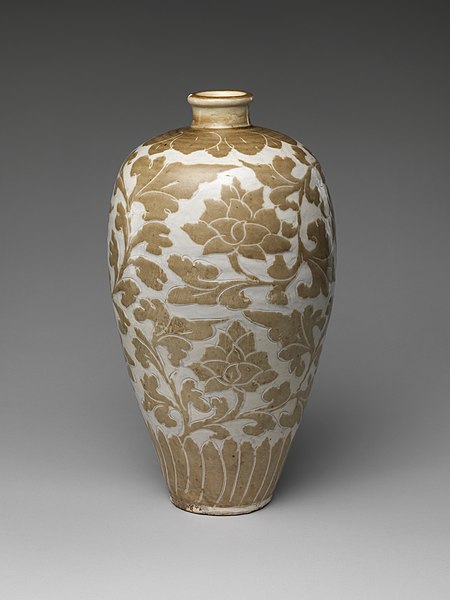A slip is a clay slurry used to produce pottery and other ceramic wares. Liquified clay, in which there is no fixed ratio of water and clay, is called slip or clay slurry which is used either for joining leather-hard (semi-hardened) clay body together by slipcasting with mould, glazing or decorating the pottery by painting or dipping the pottery with slip. Pottery on which slip has been applied either for glazing or decoration is called slipware.
African red slip ware: moulded Mithras slaying the bull, 400 ± 50 AD.
Charger with Charles II in the Boscobel Oak, English, c. 1685. The plate's diameter is 43 cm; such large plates, for display rather than use, take slip-trailing to an extreme, building up lattices of thick trails of slip.
Chinese porcelain sugar bowl with combed, slip-marbled decoration, c. 1795
Chinese Cizhou ware vase with cut-glaze decoration
A slurry is a mixture of denser solids suspended in liquid, usually water. The most common use of slurry is as a means of transporting solids or separating minerals, the liquid being a carrier that is pumped on a device such as a centrifugal pump. The size of solid particles may vary from 1 micrometre up to hundreds of millimetres.
The particles may settle below a certain transport velocity and the mixture can behave like a Newtonian or non-Newtonian fluid. Depending on the mixture, the slurry may be abrasive and/or corrosive.
A slurry composed of glass beads in silicone oil flowing down an inclined plane
Potato starch slurry






